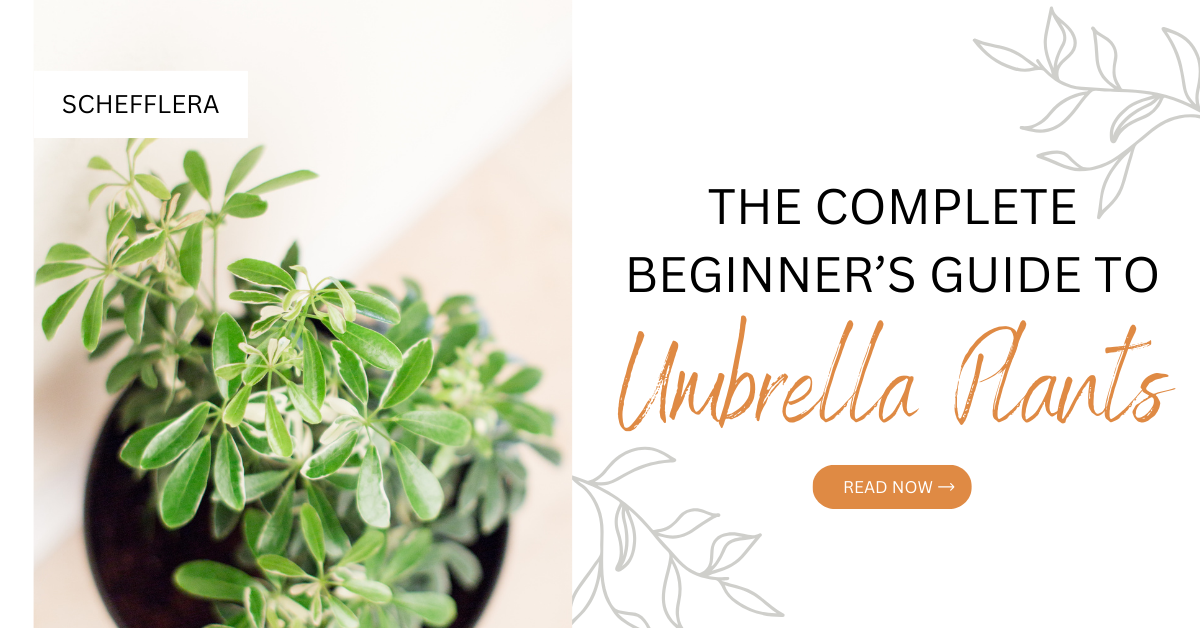Umbrella plants, or Schefflera actinophylla, is a beautiful branching indoor plant that has become very popular over the years. This is because of its ability to survive in lower light levels and its low maintenance. But surviving is different from thriving. Here are my instructions for how to care for an umbrella plant indoors so it can not only survive, but also give you lots of new growth!
*Note: This post may contain affiliate links, which if purchased helps to support this website at no extra charge to you. This helps me to keep providing awesome information to y’all!*
The umbrella plant (or dwarf schefflera) is native to Taiwan and South China. It’s renowned for its lustrous, umbrella-like leaves which give it its common name, as well as the nickname, the parasol plant! This evergreen tree is naturally an understory tree, which means that even in its tropical, native environment, it doesn’t receive direct, full sun. Keep this in mind while caring for your schefflera plants as it will help you to keep your care routine similar to its native habitat.
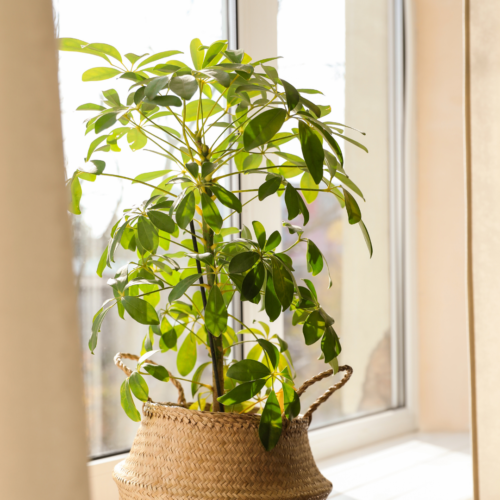
Umbrella Tree Light Requirements
These plants prefer bright, indirect light for strong, healthy growth. Exposure to direct sunlight can scorch the leaves, leading to a dull and unhealthy look. However, if the plant doesn’t get enough light, it may become leggy. A north or east-facing window is often a good location.
If you need something for your dark corner, then my recommendation is to allow it to have several weeks of bright, indirect light and then move it to your dark location for a few weeks. This rotation shouldn’t cause too much stretching of new growth. Or you can check out my video on the Best Houseplants for Low Light!
And keep in mind that if you are having too much stretching, the only way to fix it is to trim it down and let it grow new branches in better lighting.
*Note that the sap of this plant contains calcium oxalate crystals, which can cause an irritation for some people. Be sure to use gloves while pruning or propagating this plant and wash your hands thoroughly after contact*
And again, please keep your schefflera out of hot, direct sunlight. This can cause large, faded brown areas on your leaves which will never be able to revert back to green. If in doubt, leggy is always better than burnt!
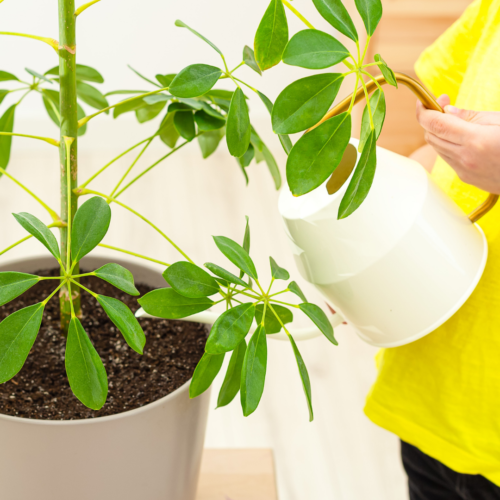
Umbrella Tree Water Requirements
Dwarf umbrella plants prefer to be lightly moist. So it is important to avoid both severe water-logging and letting the soil dry out completely.
The best approach for watering your umbrella plant is to water thoroughly, and then allow the top inch of soil to dry out before the next watering. A good rule of thumb is to water them once every week during the growing season and reduce watering frequency to every two weeks during winter. Overwatering can lead to root rot which is a common issue among umbrella plants.
In low light, I usually adjust my dwarf umbrella tree watering by only slightly decreasing my frequency of watering and focusing more on decreasing the amount of water I add each time. Watch out for green or yellow leaves dropping. This is a sign of having too much water in your soil. If this is happening to your umbrella plant, then immediately repot your plant into fresh, dry soil and trim off any black or mushy roots!
Another key to ensuring that your indoor umbrella plant has a balanced amount of watering is to make sure that it has drainage holes in the bottom of its pot. This allows any excess moisture to drain out the bottom of the pot instead of pooling in the bottom of the soil. Excess moisture at the bottom of your pot can cause root rot.
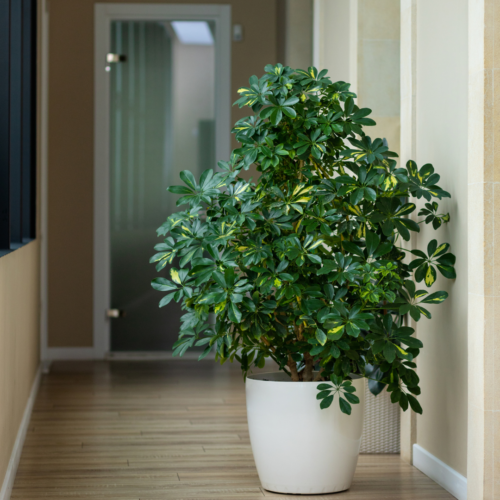
Umbrella Tree Fertilizer Requirements
Feeding an umbrella plant is not a complex process since they are not heavy feeders and don’t require much fertilizer to maintain their growth. Use a general-purpose houseplant fertilizer diluted to half the recommended strength. Feed your umbrella plant once every couple of weeks during the growing season, typically from spring to early fall. During the quieter winter months, feeding can be reduced to once a month, or even stopped completely if your plant is not actively growing.
Be careful to not add too much fertilizer to any new plants that you have propagated. Young roots and plants are more susceptible to fertilizer burn. Consider using a fertilizer that is more tailored to young plants, such as SuperThrive, or a slow-release fertilizer.
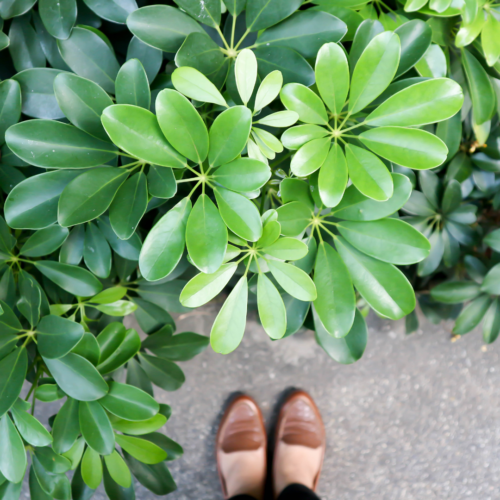
Umbrella Plants and Temperature
Umbrella plants prefer temperatures between 60 and 85 degrees Fahrenheit. Any drastic or sudden changes in temperature can lead to wilted leaves. Maintain a consistent temperature and keep the plant away from drafty windows or doors. It does not like cold drafts so keep it away from air conditioner vents in the summer and drafty doors in the winter.
Humidity Levels
As tropical plants, umbrella plants prefer high humidity levels. Dry air, common in heated interiors during winter, can cause the leaves to drop. To increase humidity, you can place it in a well-lit bathroom or kitchen, use a humidifier, or place the plant on a tray filled with pebbles and water.
If you can’t raise the humidity levels, at least try to keep it way from any heating or cooling vents as these can drastically decrease the humidity, specifically in the winter while the heater is running.
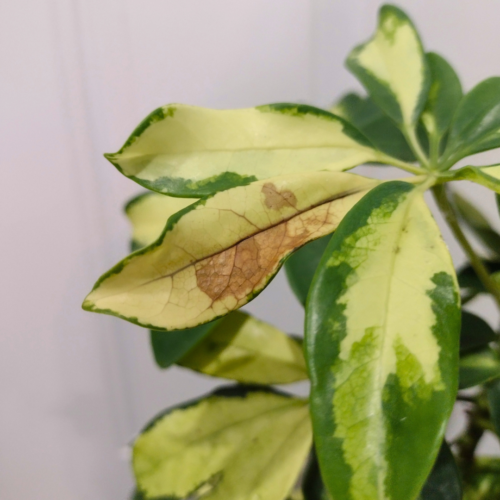
Common Umbrella Plant Issues and How to Solve Them
Despite your best attempts, it’s possible that your umbrella plant may encounter some issues. Don’t worry, these are generally easily rectified with a bit of knowledge and a quick response.
Yellow Leaves
One common problem with umbrella plants is yellowing leaves. This is often a sign of overwatering. If you notice yellow leaves, the best action would be to check the soil. If you find moist soil, then reduce your watering. And as I mentioned above, if your leaf drop is excessive and your soil is still moist, then immediately repot your plant into fresh, dry soil.
Brown Leaves
Brown, crispy leaf tips on your umbrella plant could indicate low humidity or underwatering. In these cases, increase the frequency of your watering and consider using a moisture tray or a humidifier to increase humidity.
Light brown splotches, however, could be a sign of too much hot, bright light. I would make sure that your dwarf schefflera is not getting too much hot sunlight and consider moving it if it is showing signs of leaf scorch.
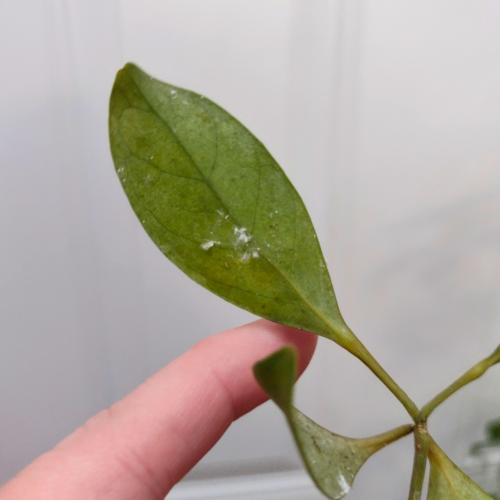
Pests
Pest infestations can be another problem, particularly with scale insects, spider mites, or mealybugs. These pests can be tackled by wiping the leaves with a mild solution of soapy water or by using a specific houseplant insecticide. Insecticidal soap is a particular favorite of mine for a foliar spray, or this Bonide systemic insecticide works great for most indoor plants!
For more information on how to get rid of specific pests, check out my Indoor Plant Pest Guide!
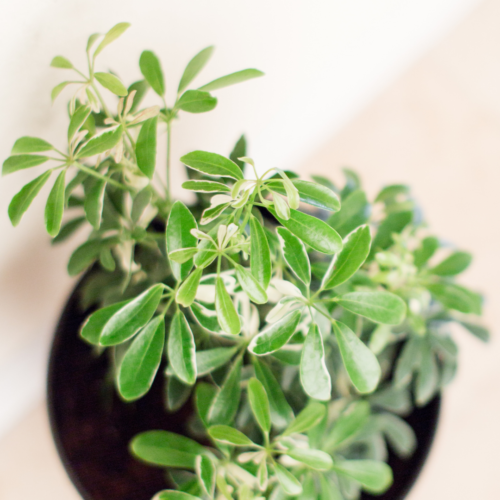
Little to No New Growth
Slow growth or no growth, particularly during the growing season from spring through the fall, can indicate either that the plant isn’t getting enough light or that it needs some fertilizer. Simply moving your umbrella plant to a brighter location and ensuring it’s properly fed can help resolve this issue.
If you still aren’t seeing any new growth, especially on a mature plant, consider repotting it to stimulate its root system. Or, if your plant is receiving little light, consider moving it to a location where it will get bright, indirect light during the day. This can also stimulate the plant to put out a flush of new growth!
Conclusion
Here a quick recap of the umbrella plant…
- Schefflera arboricola plants: A popular houseplant known for its unique umbrella shaped stem and leaves. It has grown in popularity due to its easy-care nature.
- Required Environment: The plant thrives best in warm indoor temperatures, high humidity levels, and bright, but indirect light.
- Feeding & Watering: These plants require a balanced approach to feeding and watering, avoiding both under-watering and over-watering as well as a balanced fertilizer.
- Common Issues: By recognizing the signs of common umbrella plant issues such as yellowing leaves and watching for common plant pets Seychelles as Scaife insects and spider mites, we can take steps to mitigate these problems effectively.
With this knowledge at your fingertips, caring for an umbrella plant indoors should be a breeze. Remember, it’s not just about keeping your plant alive but creating a nurturing environment where it can thrive. So, bring home an umbrella plant and give these tips a try.
Happy Digging!
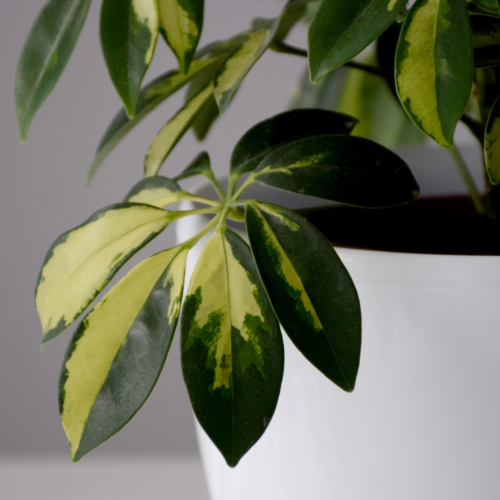
Umbrella Plant Care FAQs
How much light does an umbrella plant need?
Umbrella plants thrive in bright, indirect light. They can tolerate some direct sunlight but overexposure can burn the leaves. In low light conditions, their growth may slow and the leaves may lose their vibrant color. Make sure to give your umbrella plants the right conditions to ensure optimal growth!
How often should I water my umbrella plant?
Watering frequency for umbrella plants can depend on the environment, but generally, watering once a week is sufficient. It’s best to keep the soil slightly moist but not soaked; allowing the top inch of soil to dry out before the next watering can help prevent overwatering. Consider adding a liquid fertilizer at half strength to your water during the summer months for an explosion of new growth!
What type of soil is best for the umbrella plant?
Umbrella plants prefer well-draining soil, which prevents excess water from sitting around the roots and causing rot. A commercial potting mix for houseplants or a blend of equal parts peat moss, coarse sand, and perlite should work well to keep your soil draining well.
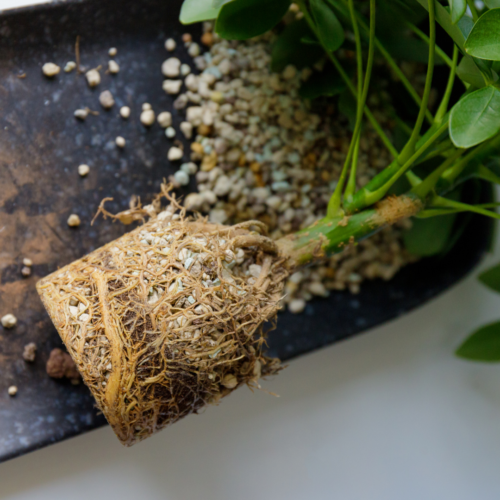
Why are the leaves of my umbrella plant turning yellow?
Yellowing leaves can be a common issue with umbrella plants and can be due to several reasons, including overwatering, insufficient light, or nutrient deficiency. The first thing to do is to check your soil. If your soil is wet, then you may need to repot your plant into fresh, dry soil. If your soil is not wet, then further troubleshooting is required to know why your plant’s leaves are turning yellow.

